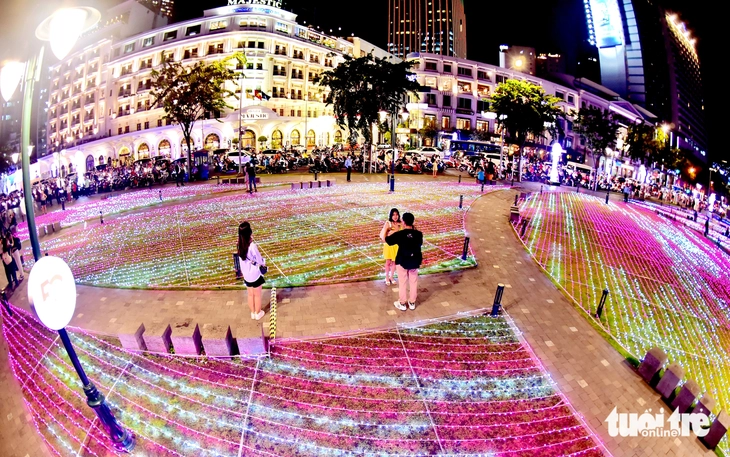
The light art area at Bach Dang wharf park, District 1, Ho Chi Minh City attracts many young people to come and have fun - Photo: TTD
Recently, the issue of developing night-time economic resources was once again raised by Chairman of Ho Chi Minh City People's Committee Nguyen Van Duoc at a meeting with District 1 People's Committee, starting with piloting night tourism products along the Saigon River from Ba Son Bridge to Nha Rong Wharf.
Mr. Duoc said that the night economy is not about eating and drinking on the sidewalk but must have modern activities, create cultural spaces and carry the identity of Ho Chi Minh City.
Waiting for the variety of night services
One of the biggest problems of the night-time economy in Ho Chi Minh City today is spontaneous, uncontrolled development, especially the chaotic "sidewalk economy".
Unplanned trading and rampant drinking on the sidewalks not only spoil the urban beauty but also affect security and order.
Therefore, according to businesses, it is necessary to issue controlled business licenses and create shopping and dining spaces according to international standards instead of makeshift stalls. Localities must have clear regulations to ensure a balance between developing the night-time economy and maintaining social order.
Speaking with Tuoi Tre, many businesses and experts affirmed that for the night-time economy to develop sustainably, there must be a well-invested ecosystem and connections between the tourism , culinary, entertainment and shopping industries.
As a travel agency that exploits a variety of domestic and international tourist markets, especially city tour products, Vietluxtour Company has coordinated with District 1 People's Committee to develop night tours such as Old Saigon - New Ho Chi Minh City, District 1 - Night Colors...
These products mostly serve inbound tourists (international visitors to Vietnam), but for tourists with longer city tours, from 5 days or more, perhaps night tour programs need to be more diverse to meet tourists' needs.
Ms. Tran Thi Bao Thu, communications director of Vietluxtour, said that tourism businesses always want to create differences in each product, such as tourists who like to cruise on the river will feel a sparkling Saigon; while tourists who like to walk on the street will see a different, vibrant, bustling Saigon... This diversity is necessary to help tourists spend all their time and travel budget.
"However, at present, night tours can only be sold when requested by customers and cannot depart regularly. We are still waiting for the diversity and stability of the quality of tourism services and infrastructure to be able to comprehensively develop night tourism products," Ms. Thu hopes.
Even long-standing businesses associated with the two banks of the Saigon River believe that the night-time economic value in this space has not yet been exploited to its full potential.
The owner of the Elisa floating restaurant said that tourists love the experience of watching the sunset on the Saigon River, enjoying delicious food and enjoying the cool breeze on the high floor of the ship.
"This trend has become more evident since the COVID-19 pandemic, when customers have switched from dining in rooms to outdoor spaces. These services are considered high-class but are not known by many customers because we still lack a truly bustling, well-lit riverside space," the restaurant owner shared.
According to Mr. Nguyen Quoc Ky - Chairman of Vietravel, in order for the night economy to develop systematically, Ho Chi Minh City needs to have a clear strategy, not only planning business areas but also investing synchronously in traffic infrastructure and support services.
Taking advantage of this area not only helps increase economic value but also contributes to urban beautification, avoiding riverside land being abandoned and wasting resources.
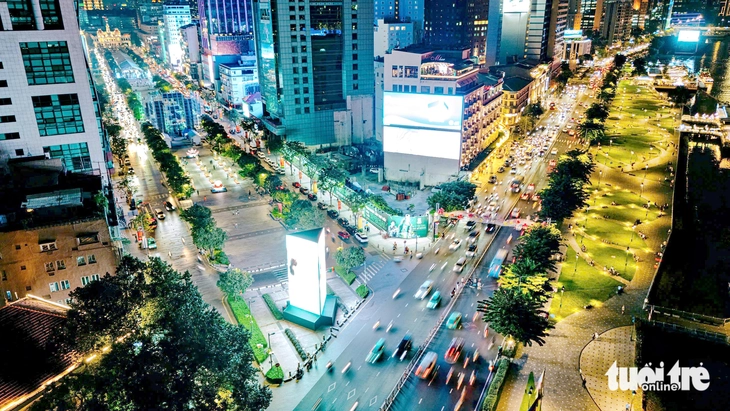
The Ton Duc Thang street area (from Nha Rong wharf to Ba Son bridge) is requested to pilot calling for investment in night-time economic development - Photo: THANH HIEP
New spaces need to be connected.
Businesses believe that to serve the development of the night-time economy, the central area of District 1 needs to be systematically planned to become a vibrant cultural space, recreating the history of old Saigon - Gia Dinh, while connecting with key tourist destinations of the city.
According to Mr. Ky, if only one area is developed for walking, it will easily lead to boredom. "The walking street needs to have a destination and some activities that attract tourists, not just walking," he emphasized.
Therefore, according to him, the riverside space needs to be connected to important historical sites such as Nha Rong Wharf, Bach Dang Wharf, as well as areas bearing the cultural imprint of Ho Chi Minh City.
Well-connected walking routes for visitors to fully experience history and culture. These routes must be connected to tourist attractions, sightseeing spots, and cultural relics.
Currently, some travel companies have built routes for walking tours to explore the city, which are very popular with foreign tourists. However, the existing spaces are overloaded and more tours are needed to be developed according to each theme, combining walking, visiting architectural works, museums, the old quarter and art destinations.
Mr. Phuoc Dang, CEO of Outbox Company, suggested that riverside spaces must first bring the breath and rhythm of local people's life, and have a high sense of community.
Once combined with modern cultural values, the city will create an attractive destination for both tourism and culture in this new space.
Currently, Ho Chi Minh City is lacking in unique cultural and artistic programs at night. Products that can attract tourists such as the show À ố... are not performed regularly, and the night cruise tours have no special services.
"Therefore, if we build a strategy to develop the night-time economy, we need to start with cultural spaces and performing arts here. Like Seoul has done very successfully and attracted tourists to shop and enjoy art on the streets," Mr. Phuoc Dang suggested.
Meanwhile, Mr. Phan Xuan Anh, Chairman of the Board of Members of Viet Travel Company, also said that developing the night economy, especially the spaces along the Saigon River, is not simply about expanding business hours but also taking into account reasonable planning factors, ensuring a balance between economic growth, culture and the living environment of urban residents.
Ho Chi Minh City can absolutely learn from Singapore's night-time economic model, where riverside areas are well-planned with yachts, entertainment areas, luxury restaurants and modern night markets.
"First of all, we must renovate and upgrade this riverside route to become a clean, green and beautiful riverside park square, attracting tourists to visit and sightsee in the evening. For a long time, cruise services have been developed on the Saigon River, in addition to serving tourists to see the city, they also serve food and drink and enjoy traditional music," said Mr. Anh.
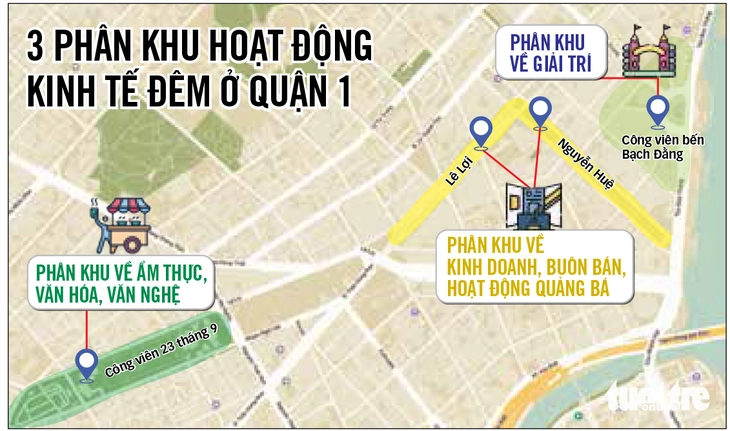
Source: Draft Project for night-time economic development of District 1 - Graphics: TUAN ANH
Revealing "ecological night city" in District 1
The draft report on the project on the direction of night-time economic development in District 1 (conducted by the Ho Chi Minh City Institute for Development Studies and the People's Committee of District 1) shows that District 1 is leading localities in Ho Chi Minh City and the whole country in terms of the level of development of the night-time economy.
This area has a very high concentration of businesses providing core services of the night-time economy - including food and beverage services, bars, pubs, discos, karaoke and other entertainment services.
However, up to now, the locality has not had a development orientation and strategy and has not had a comprehensive development plan for night-time economic development in the area.
And this draft has provided an orientation for night-time economic development in District 1 towards integrating "ecological night city" based on "3 dynamic axes - 6 functional clusters".
In which, 3 dynamic axes play the role of linking clusters into a diverse and unique night-time economic network, specifically the cultural - commercial axis (the essence of Saigon) including Pham Ngoc Thach Street (from Cong Truong Quoc Te roundabout to Notre Dame Cathedral), Cong Xa Paris (from Le Duan Street to Nguyen Du), Dong Khoi (from Nguyen Du Street to Le Loi), Le Loi (from Nguyen Hue Street to Quach Thi Trang roundabout) and the entire Nguyen Hue Street.
Next is the green axis (breathing life into the city) including September 23rd Park, the section from Ben Thanh metro station to Ton That Tung street. Finally, the waterfront axis (flow of time) includes the first section from Bach Dang wharf to Ba Son port park, further to Landmark 81.
This draft also divides into 6 functional clusters which are tourist destination areas and need to be linked into the night-time economic network, including cultural and heritage clusters, commercial centers, urban life, relaxation spaces, nightlife and waterfront light roads.
These clusters are all associated with cultural and commercial locations, with a variety of accompanying services from shopping, sightseeing, dining, karaoke and electronic games... Tien Long
Night economy seen from China, Japan and Thailand
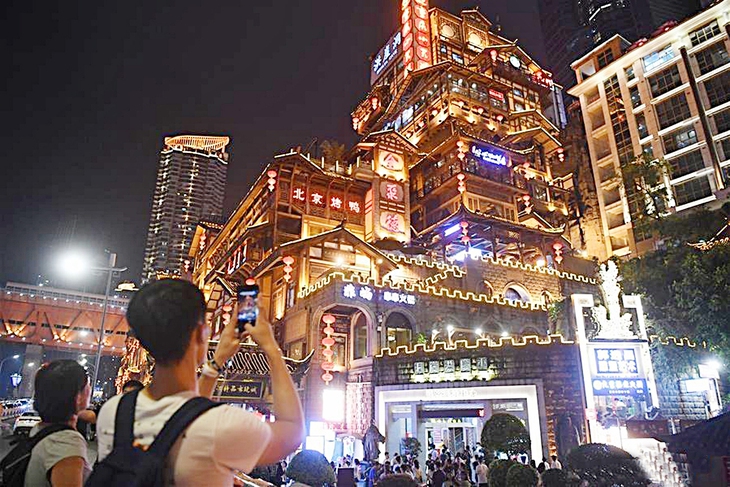
Tourists take photos at Hongyadong, Chongqing (China) at night - Photo: TANHUA XA
During the period of 2021 - 2023, the night economy in China has grown significantly. According to the assessment of the market research company Daxue Consulting, the night economy in China is not only limited to the scope of dining but also expanded to many diverse types of entertainment culture such as concerts, art exhibitions, shopping and Chinese-style night tourism.
Specifically, each city in China will take advantage of its unique cultural features to develop unique tourism activities.
Highlights include the nightlife festival in Tianjin, the traditional medicine culture night market in Shenyang, the light show in Xi'an Square, the lantern fair in Zhejiang province, and night tours of Suzhou ancient gardens and caves in Luoyang.
In addition, some large cities in the country of a billion people have also deployed a system of stores operating 24/7 and maintained LED lighting systems in skyscrapers at night.
In particular, the Beijing capital government has issued policies to encourage businesses to extend service hours, improve the public transportation system at night, as well as launch night markets with the goal of developing about 6,000 large-scale food businesses, according to the People's Daily (China).
Tokyo, Japan, has launched an ambitious initiative to revive its nightlife, with a total investment of up to 3.8 million USD.
Specifically, the authorities have cooperated to organize 12 night events to honor the charm and beauty of Tokyo after sunset, according to the Asahi newspaper.
The Japanese government began issuing policies to promote the night-time economy in 2010, with initiatives to take advantage of local beauty to create new sightseeing and entertainment activities.
In addition, the country also encourages the development of izakaya (Japanese-style pubs) or late-night karaoke to create a nightlife scene different from the rest of the world.
In 2017, the land of cherry blossoms amended the Adult Entertainment Law, allowing all-night dancing at some venues, creating conditions for businesses to expand their operations.
By 2020, the Japan Tourism Agency had allocated $6.7 billion to test various measures to boost the night economy, such as extending opening hours at museums.
In Southeast Asia, Thailand is one of the leading countries in initiatives to promote the night economy.
At the end of 2024, the Thai government issued a decision allowing bars, nightclubs and other entertainment venues in Bangkok, Phuket, Koh Samui, Pattaya and Chiang Mai to open until 4 a.m., instead of 2 a.m. as before, according to Nikkei Asia.
In addition, the Thai Cabinet has decided to further reduce the excise tax from 10% to 5% for night-time businesses such as nightclubs, bars and pubs, as part of the "Thailand Great Tourism Year 2025" initiative. This measure will officially take effect from January 1, 2025 to December 31, 2025, according to Pattaya News.


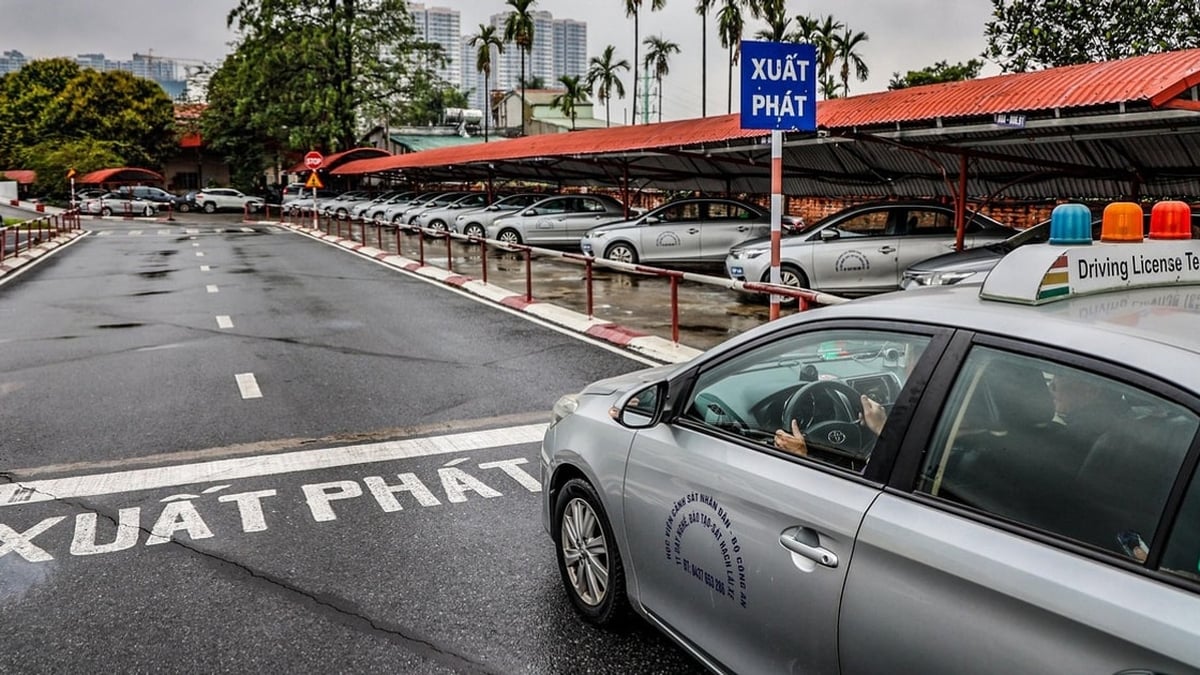



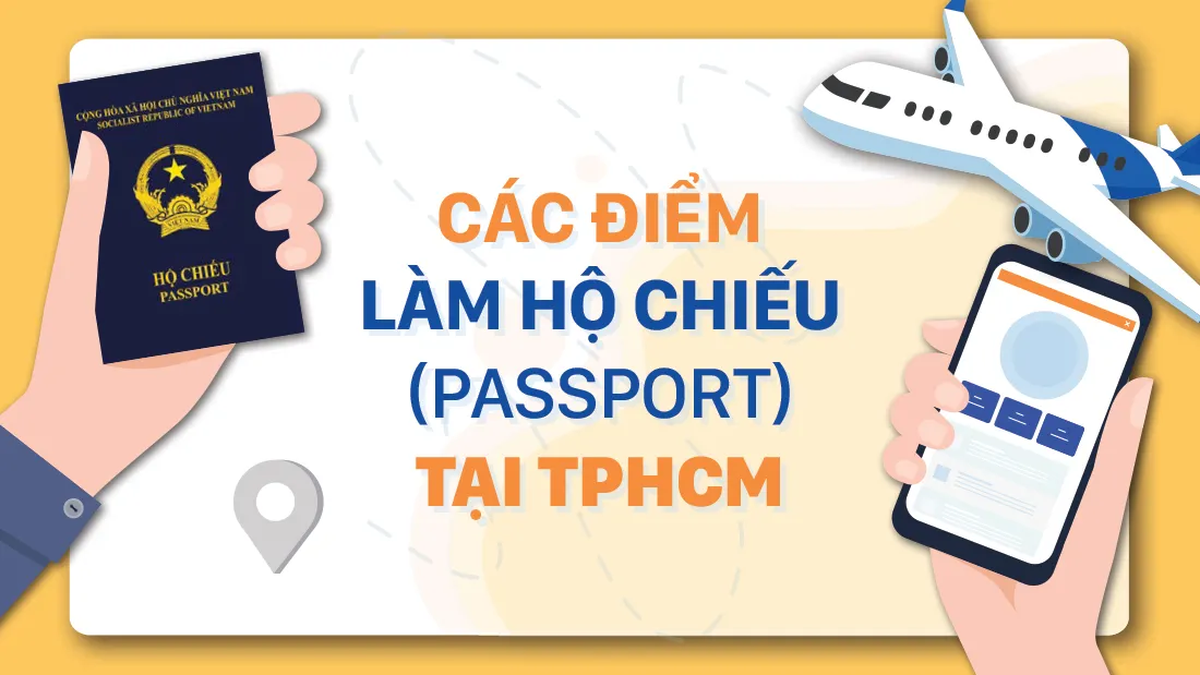


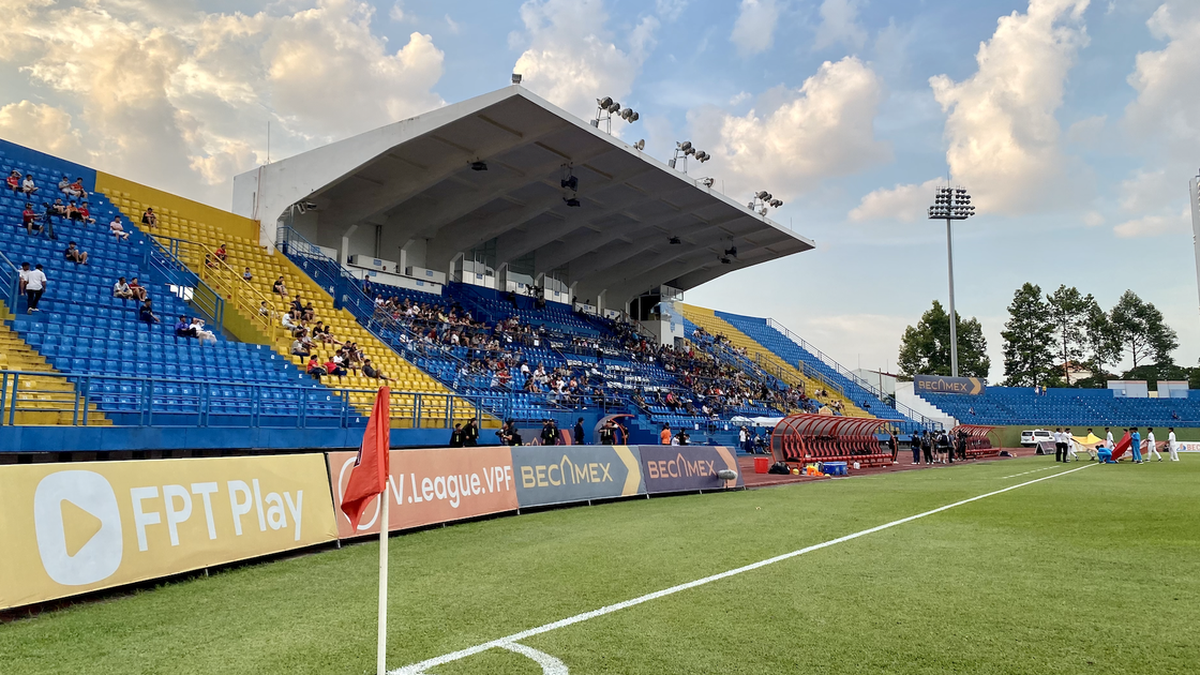

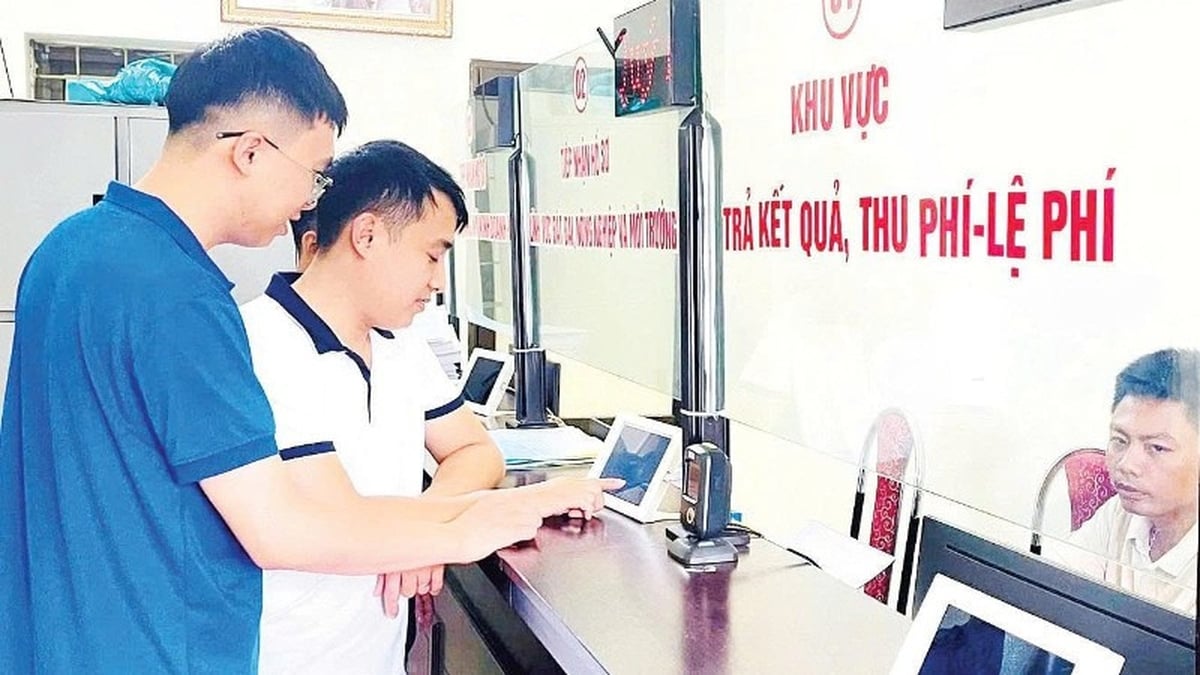



















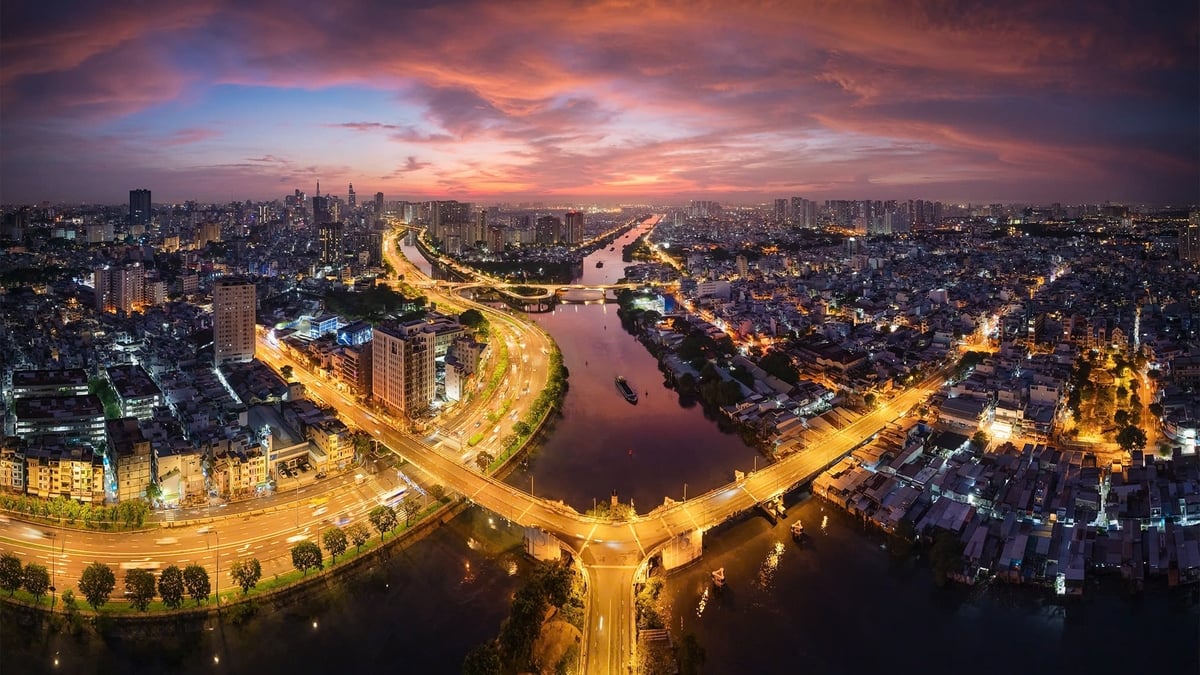


































































Comment (0)